THE HYPERFOCAL DISTANCE
FOR WHEN MANUAL FOCUS IS BETTER
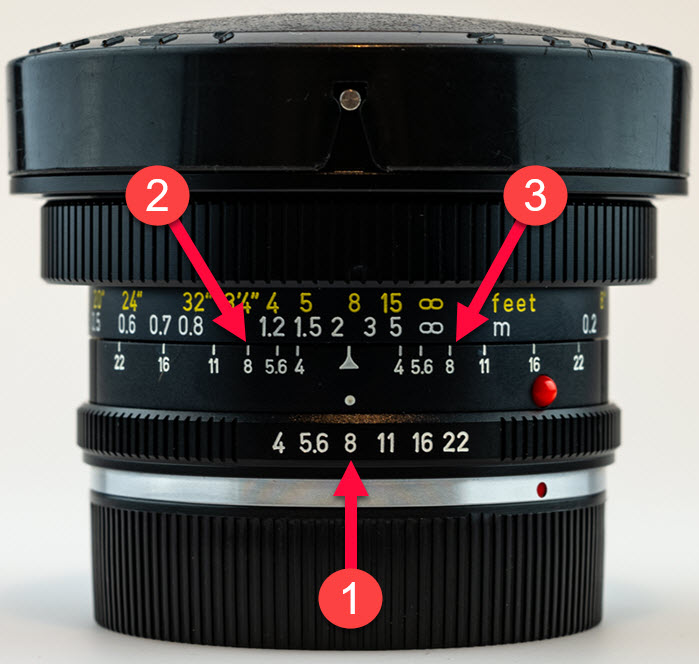
RANGE OF THE DEPTH OF FIELD
Before we get to the concept of hyperfocal distance, here's an example using the LEICA 21mm SUPER-ANGULON f4 lens, which can only be focused manually.
I take 90% of my shots in good light, and I adhere to the adage, "When the sun smiles, take (aperture) eight." With this 21mm lens, that means that when I set f/8 (1) the focus range goes from 1m (2) to infinity (3).
So all I need to do is set the lens so that the infinity symbol is in front of the selected aperture (here, aperture 8), and then I can forget about focusing - everything between the two 8 marks is now in focus.
With this setting, that means everything between 1m and infinity is in the depth of field!
THE HYPERFOCAL DISTANCE
The hyperfocal distance is the distance I need to set so that the desired area is in the plane of focus.
If I want everything to be in focus all the way to infinity, then on this lens I need to set the focus ring to just over two meters (see green arrow). So in this example, two meters would be the hyperfocal distance.
If the focus ring is set to the correct hyperfocal distance, then I have my depth of field from 1m to infinity. If - as here - you have a lens that displays the depth of field relative to the selected aperture, then all you have to do is move the desired area between the two aperture markings and you can then concentrate entirely on the composition of the shot.
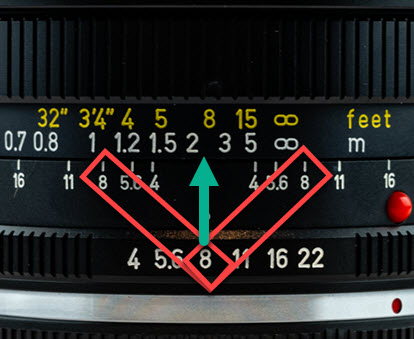
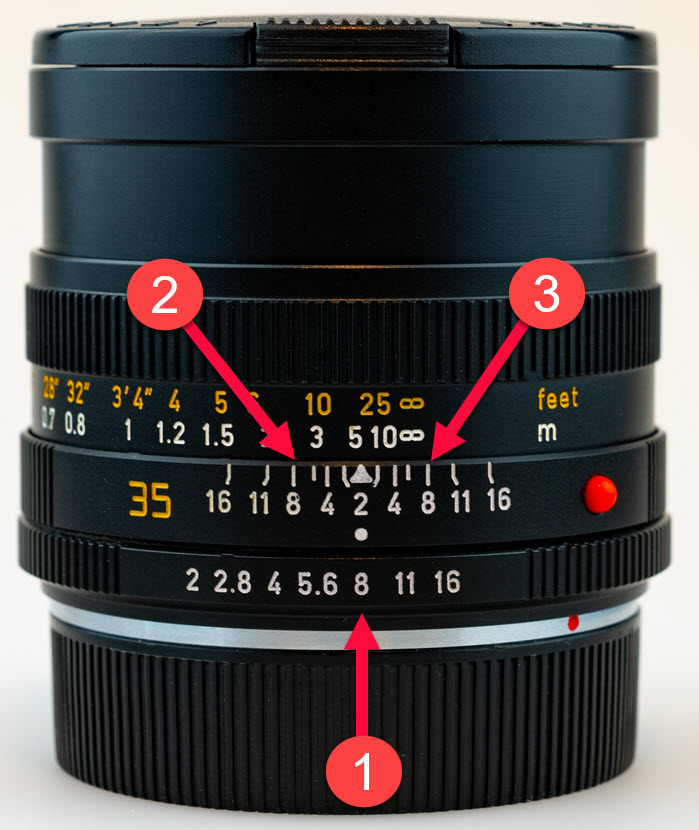
THE LONGER THE FOCAL LENGTH . . .
. . . the shorter the range between the two 8 markings.
With this 35mm lens, the focus range does not start at 1m, as it does above with the 21mm lens, but only at 2.5m, if we want to set to infinity on the right.
So when I work this way, I no longer have to focus in the viewfinder, but only beforehand on the lens. And then, with a little practice, I can shoot from the hip without making anyone nervous with the camera.
At 50mm focal length and aperture 8, however, I only have the range 5m to infinity, so autofocus becomes more important.
THE LIMITS OF THE HYPERFOCAL STRATEGY
- Focal length
Pre-setting the depth of field only works really well with lenses that have a focal length of less than 40mm. Above 40mm it works satisfactorily only with non-moving subjects, e.g. landscapes or architectural shots.
. - Lighting conditions
When it gets darker and the aperture has to be opened, my depth of field also gets thinner. My LEICA SL2 can still compensate for this to a certain extent with a higher ISO and the built-in image stabilization (IBIS), but even with that there would come a moment when the aperture has to be opened.

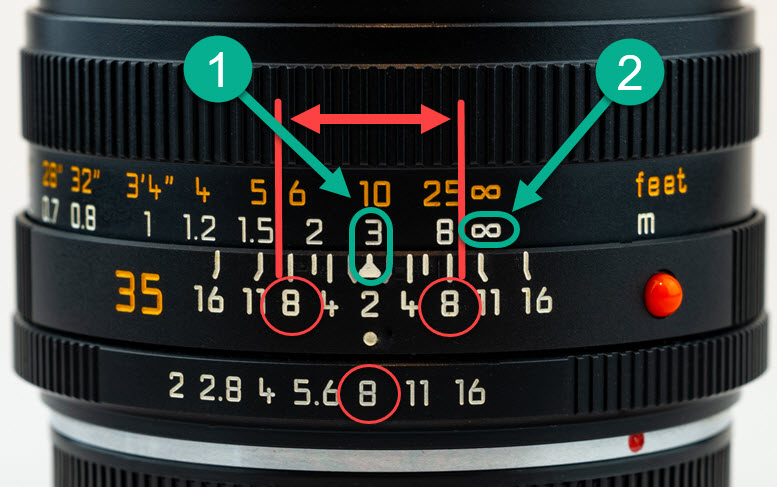
THE LIMITS OF AUTOFOCUS
Let's assume I'm standing on the shore of a lake and at a distance of 3m from me a stone sticks out of the water, which I want to have on the picture - and sharp.
If I'm using a 35mm lens with autofocus and want to have everything in focus from 2.5m to infinity (the area between the red lines), then of course it's annoying if the autofocus focuses on the stone 3m away due to the composition (1), because the sharpness then doesn't go to infinity at f/8 (2). And if the autofocus were to focus to infinity, the stone in the foreground would no longer be in focus.
Here, autofocus interferes just as it does in street photography, for example, when it focuses on areas that produce unwanted blur in either the foreground or background.
NEW LENSES OFTEN NO LONGER HAVE A SCALE
As with this 35mm APO-SUMMICRON-SL from LEICA, new lenses often no longer have depth of field scales. You then need an app that calculates the depth of field ranges - and that is more than just inconvenient.
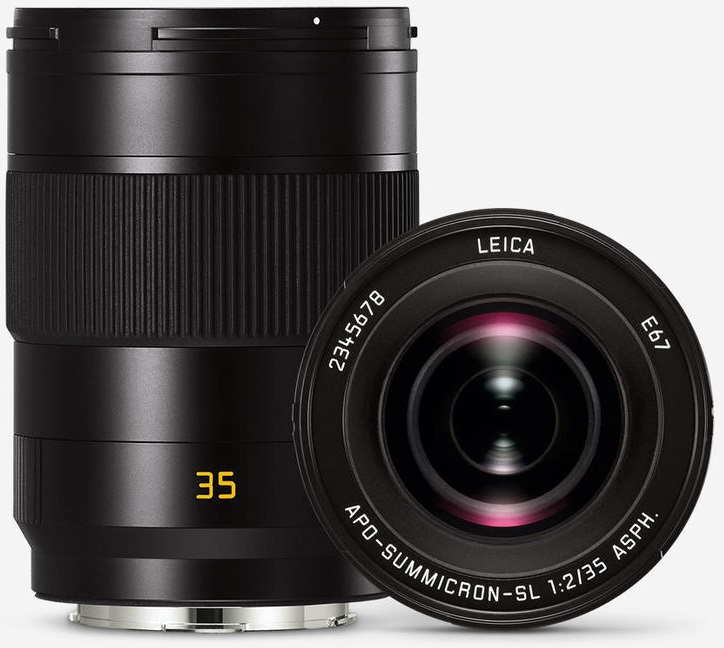
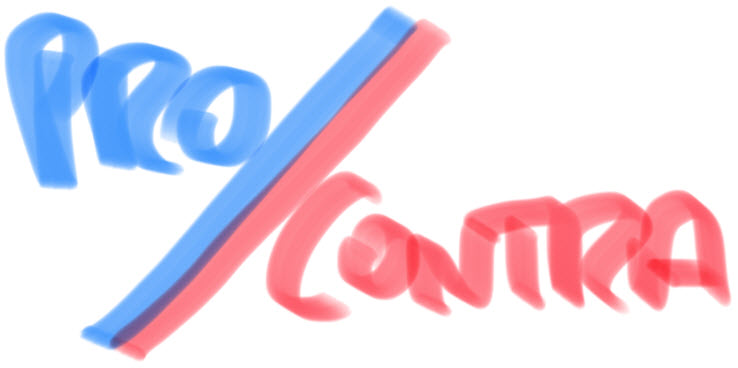
PRO AND CONTRA
1. weight and dimensions:
- MF / LEICA 35mm SUMMICRON-R f2 = 430g heavy, 66x54mm.
- AF / LEICA 35mm APO-SUMMICRON-SL = 720g heavy, 73x102mm.
My favorite focal length is 50mm. I only need the 35mm to supplement it, so I'm happy if it doesn't take up much space in my photo bag and doesn't weigh that much.
2. prices:
My manual (MF) 35mm lens costs, for example, on eBay, depending on condition between € 800 and € 1,200. This applies to 3cam lenses, the ROM versions are about twice as high in price.
The 35mm APO with autofocus (AF) currently costs €4,400, four times as much as a 3cam lens and twice as much as the ROM version. (The difference between the two versions is that only the lenses with ROM have contacts that tell the camera which lens is in use so that in-camera corrections can take effect).
And I'm usually out in good light, so I can always close the aperture to at least f8. As explained above, autofocus under these conditions usually has only disadvantages for me.
FOCUS PEAKING AIDS
Like my LEICA SL2, many newer cameras offer aids for focusing - the so-called Focus Peaking.
As you can see in the picture, all objects that are in the plane of focus are outlined in red. The small adapter in the foreground is outside the depth of field, as is the light beam in the upper right.
The focus here is on the lenses, all of which have the red lines. This makes manual focusing very easy, which is another PRO argument - or at least partially makes up for the disadvantage of no autofocus.
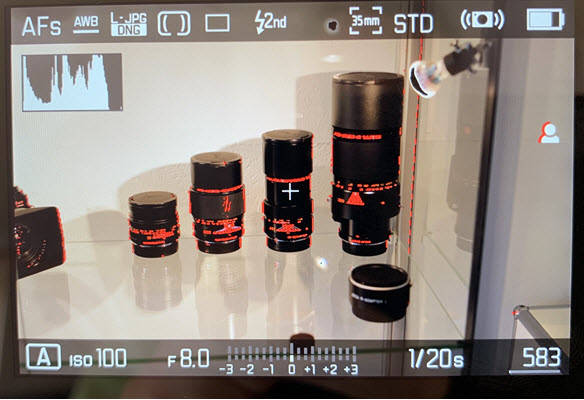
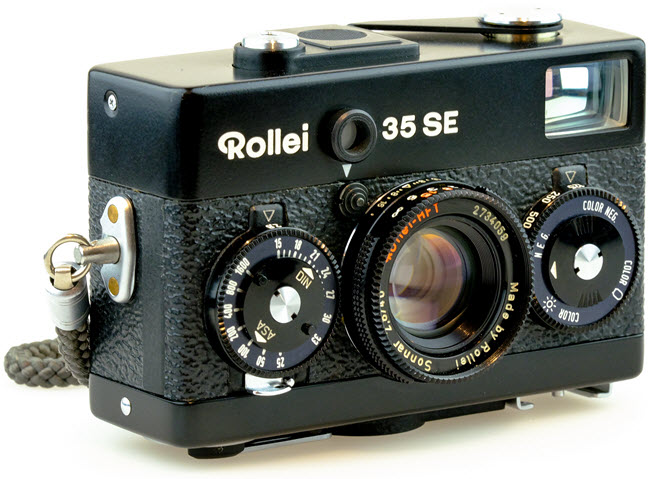
SMALL & OHO, BUT . . .
. . . without rangefinder!
The ROLLEI 35 SE is one of the smallest analog cameras that can load a 35mm film spool with 36 exposures. It has an extendable lens that is known for its very high image quality, but it has no rangefinder in the viewfinder.
You have to estimate the distance, and then adjust it on the lens. It's easy to get it wrong and lose the photo.
If you know how to use the hyperfocal strategy, you can use a generous depth of field to significantly increase the hit rate.
If you are interested in more information about this camera, click here.
